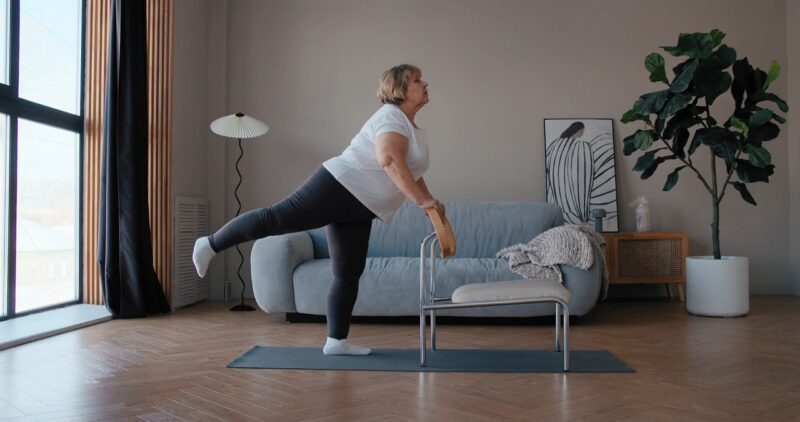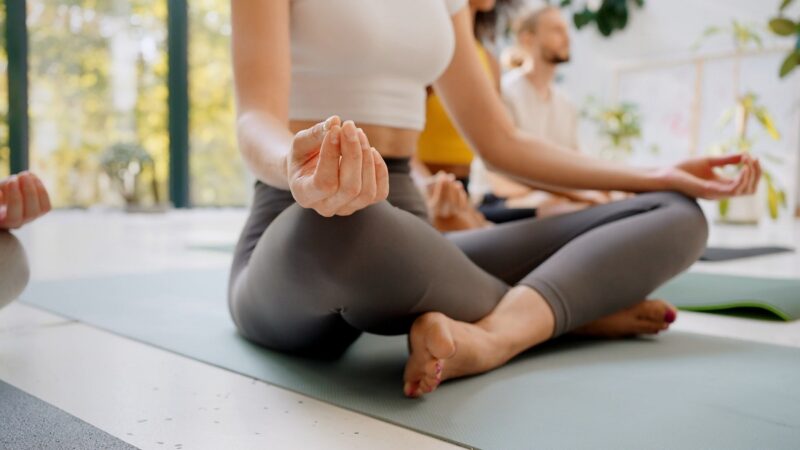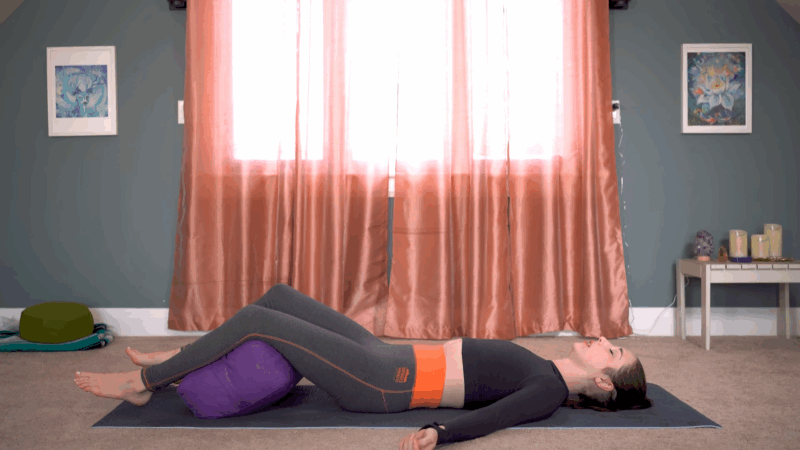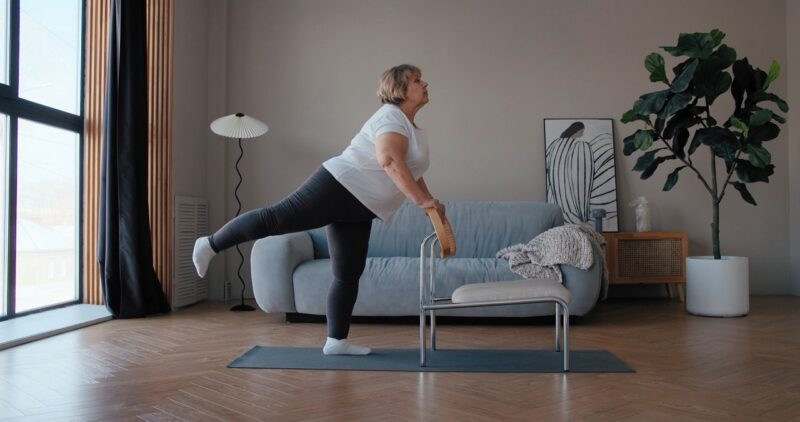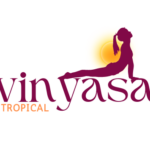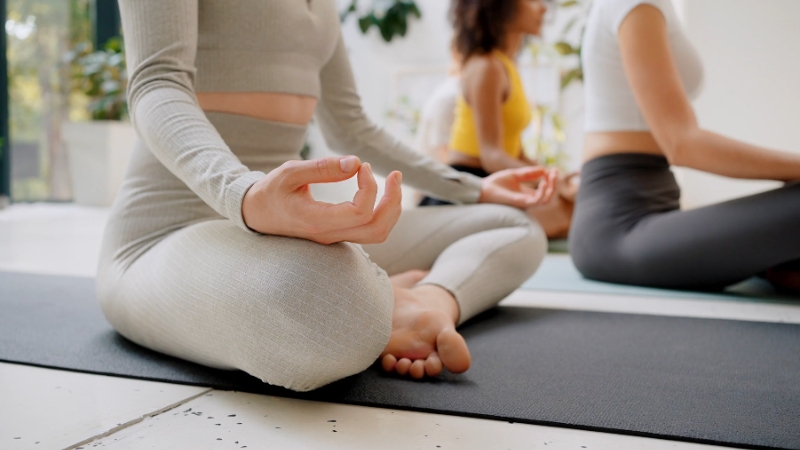
Share Post:
Yes, yoga can significantly help alleviate symptoms associated with autoimmune conditions. Recent research indicates that regular yoga practice can reduce inflammation markers, enhance immune system function, and help manage symptoms of various autoimmune diseases.
Yoga for autoimmune conditions offers a non-pharmaceutical approach that combines physical movement, breathing techniques, and mindfulness to support overall health and well-being.
Living with an autoimmune condition can feel overwhelming. The constant fatigue, joint pain, and unpredictable flare-ups create challenges that extend far beyond physical symptoms.
Many people with conditions like rheumatoid arthritis, lupus, multiple sclerosis, and inflammatory bowel disease are seeking complementary therapies to support their conventional treatments.
Throughout the following sections, you will discover how yoga impacts autoimmune health, which specific practices work best, and what the latest scientific evidence reveals about the connection between mind-body practices and immune system regulation.
What Science Reveals About Yoga for Autoimmune Health
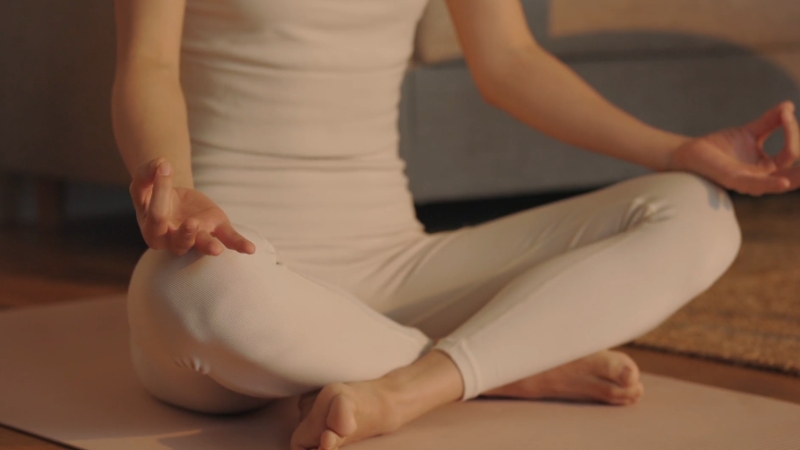
The relationship between yoga and autoimmune health has gained significant attention in recent years. Research suggests that yoga can downregulate pro-inflammatory markers, with studies showing decreases in IL-1beta, as well as indications for reductions in IL-6 and TNF-alpha.
Such findings are particularly relevant for autoimmune conditions, which often involve chronic inflammation.
Can yoga aid in managing autoimmune diseases? The evidence points to yes.
A 2024 scoping review found that yoga is a viable, non-pharmaceutical treatment for both the physical and mental health components of patients with autoimmune disorders.
The study examined 11 research trials and found improvement across all subtypes of autoimmune conditions studied.
Research on yoga and autoimmune health demonstrates measurable changes in the immune system. Studies found rapid changes in the immune system within 10 days of starting yoga practice, with both short-term and long-term benefits observed.
The speed of response suggests that yoga may provide relatively quick relief for some symptoms.
Study Focus
Duration
Key Findings
Inflammatory markers
8-12 weeks
Reduced IL-6, TNF-alpha, and CRP levels
Rheumatoid arthritis
8 weeks
Improved disease activity scores
Immune function
10 days
Rapid changes in immune markers
Mental health
6-16 weeks
Reduced anxiety and depression
The mechanisms behind yoga’s effectiveness involve multiple pathways. Current literature demonstrates strong evidence for the benefits of yoga on circulating cortisol levels and classical inflammatory markers, including C-reactive protein and various cytokines.
Lower cortisol levels help reduce stress-induced inflammation, while decreased inflammatory markers suggest improved immune system balance.
How Yoga Reduces Inflammation and Supports Immune Function
Yoga for inflammation works through several interconnected mechanisms. The practice activates the parasympathetic nervous system, which helps the body shift from a stress response to a healing state.
When you hold poses mindfully and focus on deep breathing, your body produces fewer stress hormones, such as cortisol, which can trigger inflammatory responses.
The physical movements in yoga help improve circulation and lymphatic drainage. Better circulation means immune cells can travel more efficiently throughout the body, while enhanced lymphatic flow helps remove toxins and waste products that contribute to inflammation.
Yoga and immune regulation work together as gentle stretches and controlled movements stimulate the lymphatic system without overwhelming already compromised immune function.
Autoimmune disease and stress relief are closely connected. Chronic stress worsens autoimmune symptoms by keeping the immune system in a hyperactive state.
Yoga interrupts the stress cycle through controlled breathing techniques called pranayama. Deep, rhythmic breathing activates the vagus nerve, which signals the brain to reduce the production of stress hormones.
Yoga for immune system support offers benefits that extend beyond physical well-being. The mindfulness component helps people develop better awareness of their bodies and symptoms.
Early recognition of flare-ups allows for proactive management rather than reactive treatment. Many practitioners report feeling more in control of their tareon after developing a regular yoga practice.
The anti-inflammatory effects of yoga appear to be dose-dependent. Regular practice produces better results than occasional sessions.
Most research studies showing significant benefits involved practicing yoga 2-3 times per week for at least 8 weeks. The consistency matters more than the intensity or duration of individual sessions.
Specific Benefits for Common Autoimmune Conditions

Yoga for rheumatoid arthritis has received extensive research attention. A randomized controlled trial found that yoga improves mitochondrial health and reduces the severity of autoimmune inflammatory arthritis.
The study focused on how yoga affects cellular energy production, which is often impaired in patients with rheumatoid arthritis.
People with rheumatoid arthritis who practice yoga report reduced joint stiffness and improved range of motion. The gentle movements help maintain joint flexibility without causing additional stress on inflamed tissues.
Morning yoga routines can be particularly beneficial for managing the joint stiffness that many people experience upon waking.
Holistic therapy for autoimmune disorders includes addressing fatigue, which affects nearly everyone with autoimmune conditions. Yoga and chronic fatigue have a complex relationship.
While intense exercise can worsen fatigue, gentle yoga often increases energy levels by improving sleep quality and reducing pain.
Multiple sclerosis patients often find yoga helpful for balance and coordination issues. The focus on stability and controlled movement can help maintain mobility and prevent falls.
Individuals with MS who are heat-sensitive can benefit from gentler forms of yoga practiced in cooler environments.
Inflammatory bowel disease patients may find that yoga helps manage the stress and anxiety that often accompany digestive autoimmune conditions. The combination of physical movement and stress reduction can positively impact gut health, as stress is known to trigger flare-ups in many people with IBD.
Condition
Primary Benefits
Recommended Practices
Rheumatoid Arthritis
Joint flexibility, reduced stiffness
Gentle hatha, chair yoga
Multiple Sclerosis
Balance, coordination
Adaptive yoga, wall support
Lupus
Fatigue management, stress relief
Restorative yoga, meditation
IBD
Stress reduction, gut health
Gentle flow, breathing exercises
Best Yoga Practices for People with Autoimmune Conditions
Gentle yoga for autoimmune patients emphasizes accessibility and adaptability. The goal is to support healing without causing additional stress on the body.
Traditional vigorous yoga styles may be too demanding during flare-ups, but modified approaches can still provide significant benefits.
Restorative yoga for health utilizes props such as bolsters, blankets, and blocks to support the body in comfortable positions. Poses are held for more extended periods, typically 5-15 minutes, allowing the nervous system to relax fully.
The supported nature of restorative poses makes them accessible even during periods of increased symptoms.
Chair yoga offers an excellent option for people with limited mobility or severe fatigue. All poses can be modified to be performed while seated, making yoga accessible to individuals with physical limitations.
Chair yoga maintains the breath work and mindfulness components while adapting the physical practice to individual needs.
Mind-body practices for autoimmune conditions should include breathing exercises as a central component. Pranayama techniques can be practiced independently of physical poses and offer immediate stress-relief benefits.
Simple techniques, such as 4-7-8 breathing or alternate nostril breathing, can be learned quickly and used throughout the day.
Yoga nidra, also known as yogic sleep, provides deep relaxation without physical movement. Practitioners lie comfortably while following guided meditation instructions.
The practice can help improve sleep quality, reduce pain perception, and promote healing by activating the body’s natural repair mechanisms.
Practice Element
Recommendation
Why It Matters
Session Duration
Start with 10-15 minutes
Prevents fatigue and builds consistency
Breath Focus
Maintain awareness throughout
Activates the relaxation response
Props Usage
Use blocks, straps, and bolsters
Provides support and prevents strain
Body Awareness
Listen and modify as needed
Prevents injury and respects limitations
Consistency
Regular practice over intensity
Creates lasting benefits without overwhelm
Instruction
Work with experienced teachers
Ensures safe modifications and proper technique
Managing Flare-ups and Adapting Your Practice
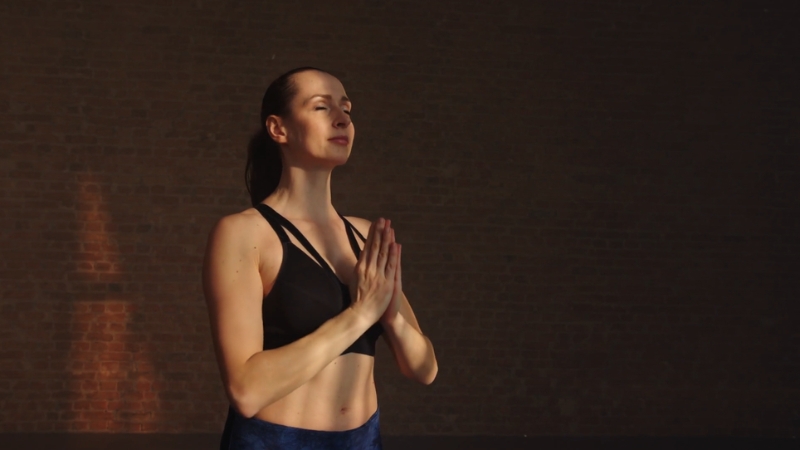
Autoimmune conditions are unpredictable, and yoga practice must be flexible enough to accommodate varying symptom levels.
During flare-ups, the focus shifts from physical poses to breathing exercises and meditation. The key is maintaining some form of practice rather than stopping altogether.
The benefits of yoga for individuals with chronic illnesses include developing better body awareness and recognizing symptoms. Regular practitioners often notice early warning signs of flare-ups, allowing for proactive management.
The mindfulness cultivated through yoga practice helps distinguish between normal discomfort and concerning symptoms.
Pain management becomes a primary concern during active symptoms. Gentle stretching can help reduce muscle tension and joint stiffness, but the intensity must be significantly reduced. Heat or cold therapy can be combined with gentle movement to provide additional relief.
Fatigue management requires careful energy conservation. On low-energy days, meditation and breathing exercises may be the only feasible practices.
Even five minutes of deep breathing can provide nervous system benefits without depleting energy reserves.
Sleep disturbances often accompany autoimmune flare-ups. Evening yoga routines focused on relaxation can improve sleep quality. Legs-up-the-wall pose, gentle twists, and progressive muscle relaxation can help prepare the body for rest.
Symptom Level
Recommended Practices
Duration
Mild symptoms
Gentle flow, basic poses
20-30 minutes
Moderate symptoms
Chair yoga, breathing exercises
10-15 minutes
Severe symptoms
Meditation, guided relaxation
5-10 minutes
Recovery phase
Gradual return to regular practice
Progressive increase
Scientific Evidence and Research Findings
The body of research supporting yoga for autoimmune conditions continues to grow. Studies, research, and experience have shown that yoga can help manage autoimmune disorders at physical, mental, and emotional levels. The evidence spans multiple types of autoimmune conditions and various yoga interventions.
Methodology in yoga research often involves randomized controlled trials comparing yoga groups to control groups receiving standard care or other interventions. Most studies measure inflammatory markers, quality of life scores, and specific symptom assessments before and after yoga interventions.
A significant 2020 study investigated the effects of an 8-week yoga program on patients with rheumatoid arthritis. Participants showed improvements in disease activity scores, quality of life measures, and inflammatory markers. The study design included both physical poses and meditation components, making it difficult to isolate which elements provided the most benefit.
Research on inflammatory markers consistently shows reductions in pro-inflammatory cytokines following yoga interventions. Regular exercise interventions, including yoga, were associated with reduced levels of C-reactive protein, interleukin-6, and tumor necrosis factor-α.
The anti-inflammatory effects appear to be cumulative, with greater benefits seen in longer-term practitioners.
Meta-analyses of yoga research face challenges due to variations in study design, yoga styles, and participant populations. However, the overall trend points toward significant benefits for autoimmune conditions. Most studies report effect sizes that are both clinically meaningful and statistically significant.
Research Aspect
Key Findings
Implications
Sample Sizes
Often limited participants
Results need replication in larger studies
Intervention Variety
Different yoga styles studied
Makes direct comparisons challenging
Control Groups
Difficult to create accurate controls
May affect the validity of findings
Outcome Measures
Often self-reported
Potential for response bias
Follow-up Duration
Limited long-term data
Unknown sustainability of benefits
Study Design
Varies significantly
Affects the strength of conclusions
Creating a Safe and Effective Yoga Routine
@elisa.yoga My safe place 🫧 🪽 🤍 #yogainspiration #yogapourtous #yogainlife #yogafrance #safeplace #yogaflow #franceyoga ♬ What Was I Made For? [From The Motion Picture “Barbie”] – Billie Eilish
Building a sustainable yoga practice requires careful consideration of individual limitations and goals. The routine should be flexible enough to accommodate good days and challenging days while maintaining consistency over time.
Starting slowly prevents overexertion and builds confidence. New practitioners should begin with basic poses and focus on proper alignment rather than advanced variations.
A qualified instructor with experience in autoimmune conditions can provide valuable guidance and modifications.
Equipment/Environment Factor
Recommendation
Purpose
Props
Blocks, straps, bolsters
Support and comfort during poses
Temperature
Comfortable, not too hot
Prevents overheating and fatigue
Hydration
Water readily available
Maintains proper fluid balance
Surface
Non-slip mats or flooring
Ensures safety and stability
Balance Support
Practice near walls
Provides security for stability and poses
Space
Quiet, calming environment
Enhances relaxation and focus
Morning routines often work well for people with autoimmune conditions, as energy levels tend to be higher earlier in the day. However, individual patterns vary, and some people find evening practice more beneficial for sleep and relaxation.
Tracking symptoms and practice responses helps identify which techniques work best for individual needs. Keeping a simple journal to note energy levels, pain scores, and mood before and after practice can reveal patterns and guide routine adjustments.
Community support enhances motivation and provides a sense of accountability. Many yoga studios offer classes specifically designed for people with chronic conditions.
Online communities and virtual classes have made yoga more accessible for those with mobility limitations or scheduling constraints.
Day
Practice Type
Duration
Focus
Monday
Gentle flow
20 minutes
Movement and flexibility
Tuesday
Breathing exercises
10 minutes
Stress relief and energy
Wednesday
Restorative poses
30 minutes
Deep relaxation and healing
Thursday
Chair yoga
15 minutes
Accessible movement
Friday
Meditation
15 minutes
Mental clarity and calm
Weekend
Flexible session
As needed
Rest or longer practice
Integrating Yoga with Conventional Medical Treatment
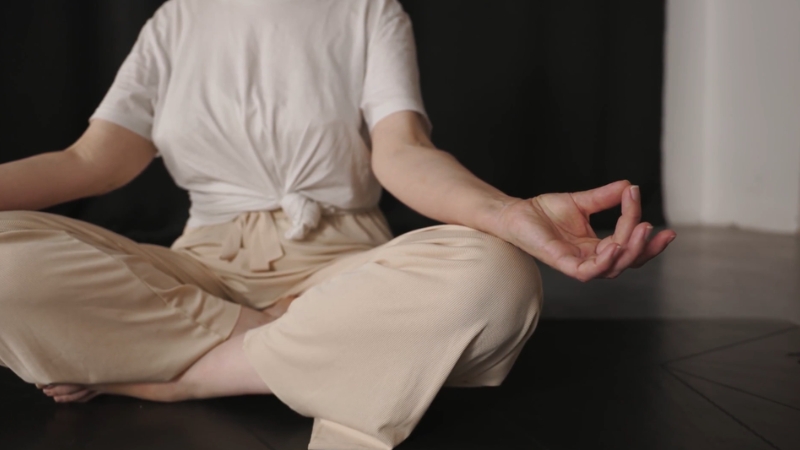
Yoga works best as a complementary therapy alongside conventional medical treatment rather than as a replacement. Open communication with healthcare providers ensures that yoga practice supports rather than interferes with prescribed treatments.
Some medications may affect energy levels or balance, necessitating adjustments to your yoga practice. Blood pressure medications, for example, may cause dizziness during quick position changes. Pain medications mask necessary body signals during practice.
Timing considerations become important when integrating multiple therapies. Some people find yoga most beneficial between medical treatments, while others prefer it as preparation for medical appointments. The key is finding a schedule that supports overall treatment goals.
The benefits of yoga for individuals with chronic illnesses extend beyond symptom management to include improved medication adherence and enhanced communication with healthcare providers. The body awareness developed through yoga practice helps people provide more accurate symptom descriptions to their medical team.
Yoga can complement physical therapy by maintaining flexibility and strength between sessions. However, coordination between yoga instructors and physical therapists helps ensure exercises are compatible and mutually supportive.
Integration Aspect
Approach
Benefit
Medical Communication
Discuss yoga plans with the healthcare team
Ensures treatment compatibility
Instructor Awareness
Inform yoga teachers about conditions
Enables appropriate modifications
Medication Monitoring
Track how yoga affects medication response
Optimizes treatment effectiveness
Treatment Timing
Adjust practice based on medical cycles
Supports the overall care plan
Complementary Role
Use yoga to support prescribed treatments
Enhances rather than replaces care
Progress Tracking
Monitor symptoms and improvements
Guides practice adjustments
Frequently Asked Questions





